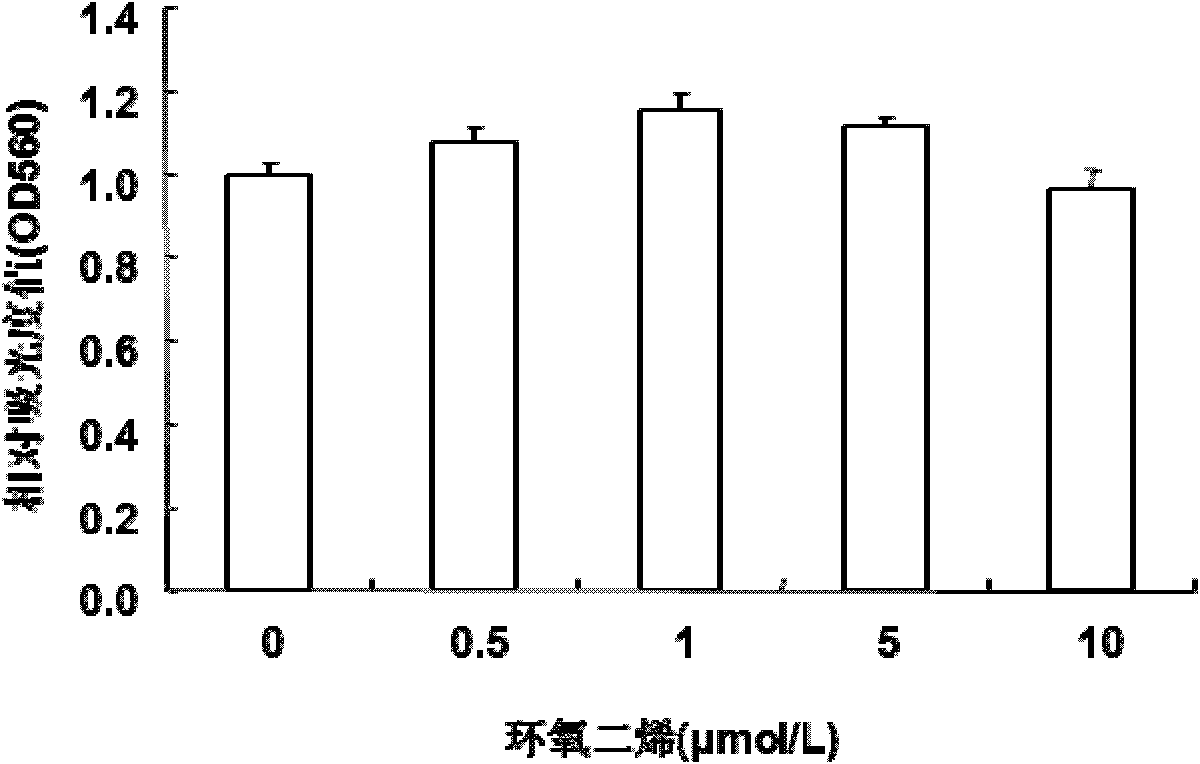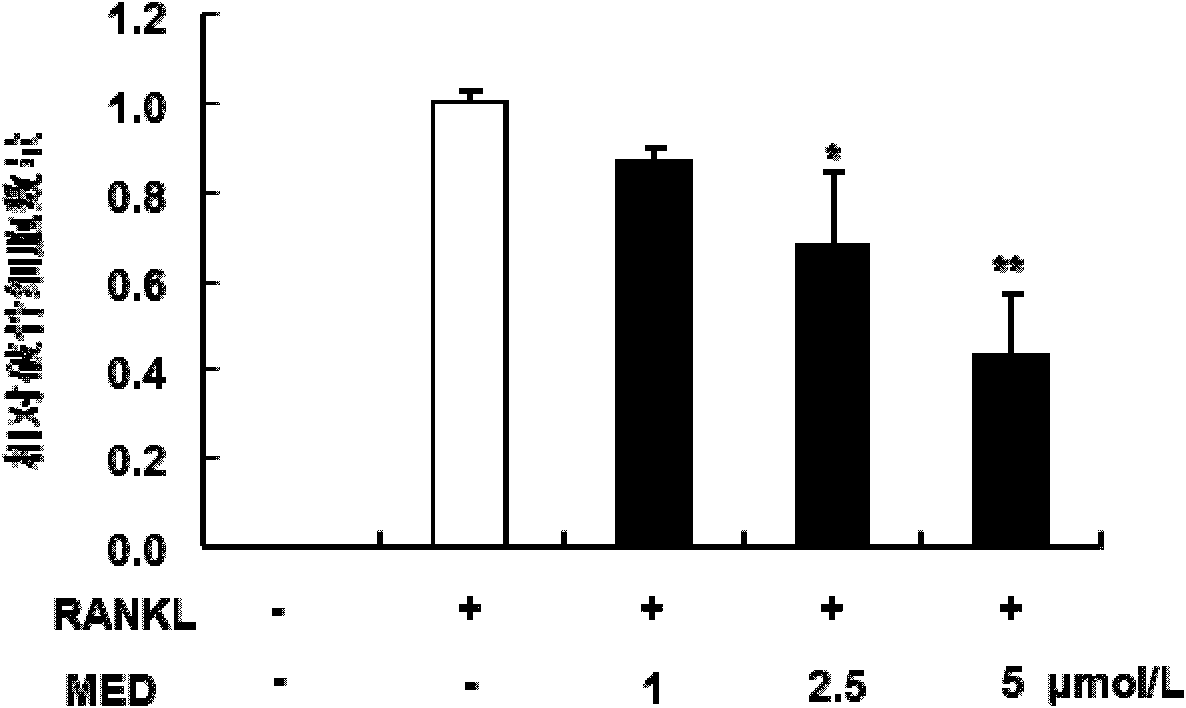Application of epoxidized diene as osteoclast differentiation inhibitor
A technology of epoxydiene and chemical formula, applied in the application field of epoxydiene as osteoclast differentiation inhibitor, can solve the problems of unreported physiological activity of osteoporosis and the like
- Summary
- Abstract
- Description
- Claims
- Application Information
AI Technical Summary
Problems solved by technology
Method used
Image
Examples
Embodiment 1
[0023] Embodiment 1, epoxy diene cytotoxicity experiment
[0024] Detection of Cytotoxicity of Epoxydiene Using MTT Assay
[0025] The test method is as follows:
[0026] Mouse C57 / BL6 bone marrow-derived macrophages (7×10 3 Cells / well) were inserted into 96-well culture plate and cultured overnight. The next day, different concentrations of MED (0.5, 1, 5, 10 μmol / L) were added for 72 hours, and then MTT was added to a final concentration of 0.5 mg / ml for 4 hours. The absorbance at 560nm (OD 560 ).
[0027] The MTT assay method can reflect the growth of the cells, so by comparing the OD 560 Value to judge whether MED has cytotoxicity to bone marrow-derived macrophages.
[0028] The test results are as follows:
[0029] For the results of the MTT method, see figure 1 . The test results show that epoxydiene has no cytotoxicity to bone marrow-derived macrophages in the concentration range of 0.5-10 μmol / L.
Embodiment 2
[0030] Example 2, the effect of epoxydiene in inhibiting the differentiation of osteoclasts
[0031] The present invention detects the role of MED in the osteoclast differentiation process through the tartrate-resistant acid phosphatase (TRAP) staining experiment technique.
[0032] The test method is as follows:
[0033] 1) MED concentration gradient:
[0034] Mouse C57 / BL6 bone marrow-derived macrophages (2×10 4 cells / well) into a 48-well culture plate, after culturing overnight, RANKL was added to a final concentration of 50ng / mL, and different concentrations of MED (1, 2.5, 5μmol / L) were added at the same time, and the effect of MED on osteoclasts was observed after stimulation for 96h The impact of differentiation.
[0035] 2) MED action time:
[0036] Mouse C57 / BL6 bone marrow-derived macrophages (2×10 4Cells / well) were inserted into 48-well culture plate, after culturing overnight, RANKL was added to a final concentration of 50ng / ml, 5μmol / LMED was added after RANK...
Embodiment 3
[0039] Example 3. Epoxydiene inhibits the expression level of osteoclast characteristic gene mRNA
[0040] The test method is as follows:
[0041] Mouse C57 / BL6 bone marrow-derived macrophages (2×10 5 Cells / well) were inserted into 6-well culture plate, after overnight culture, RANKL was added to a final concentration of 50ng / mL, and MED (5μmol / L, DMSO was used as blank control) was added to stimulate 96h, and the cellular RNA was extracted and detected by real-time fluorescence Quantitative PCR was used to detect the mRNA expression levels of osteoclast differentiation characteristic genes such as tartrate-resistant acid phosphatase (TRAP), cathepsin K (Cathepsin K) and calcitonin receptor (Calcitonin Receptor).
[0042] The test results are as follows:
[0043] The test result of embodiment 3 sees Figure 6-8 . The test results show that MED can inhibit the mRNA expression levels of osteoclast differentiation characteristic genes such as osteoclast TRAP, Cathepsin K, and...
PUM
 Login to View More
Login to View More Abstract
Description
Claims
Application Information
 Login to View More
Login to View More - R&D
- Intellectual Property
- Life Sciences
- Materials
- Tech Scout
- Unparalleled Data Quality
- Higher Quality Content
- 60% Fewer Hallucinations
Browse by: Latest US Patents, China's latest patents, Technical Efficacy Thesaurus, Application Domain, Technology Topic, Popular Technical Reports.
© 2025 PatSnap. All rights reserved.Legal|Privacy policy|Modern Slavery Act Transparency Statement|Sitemap|About US| Contact US: help@patsnap.com



